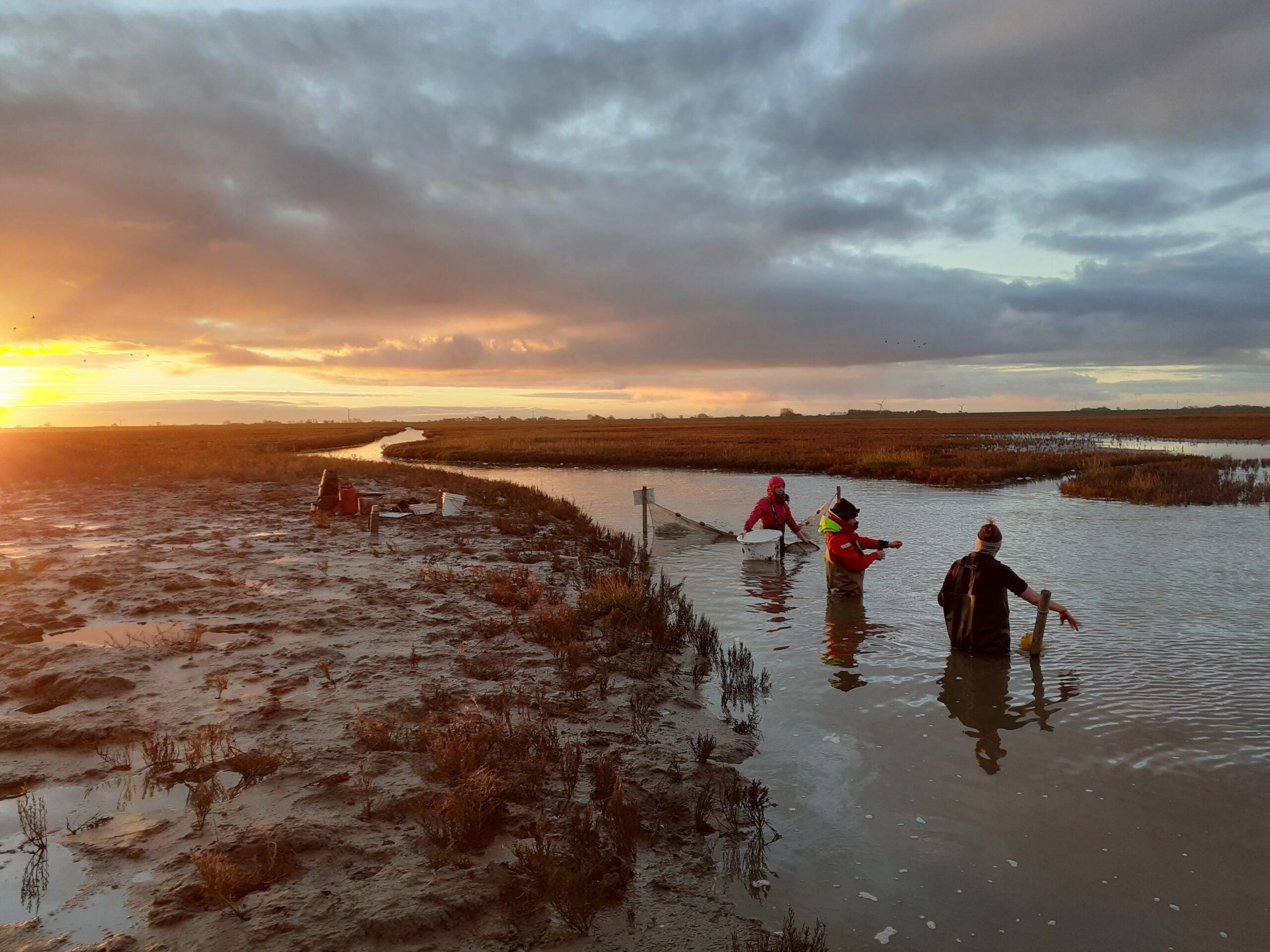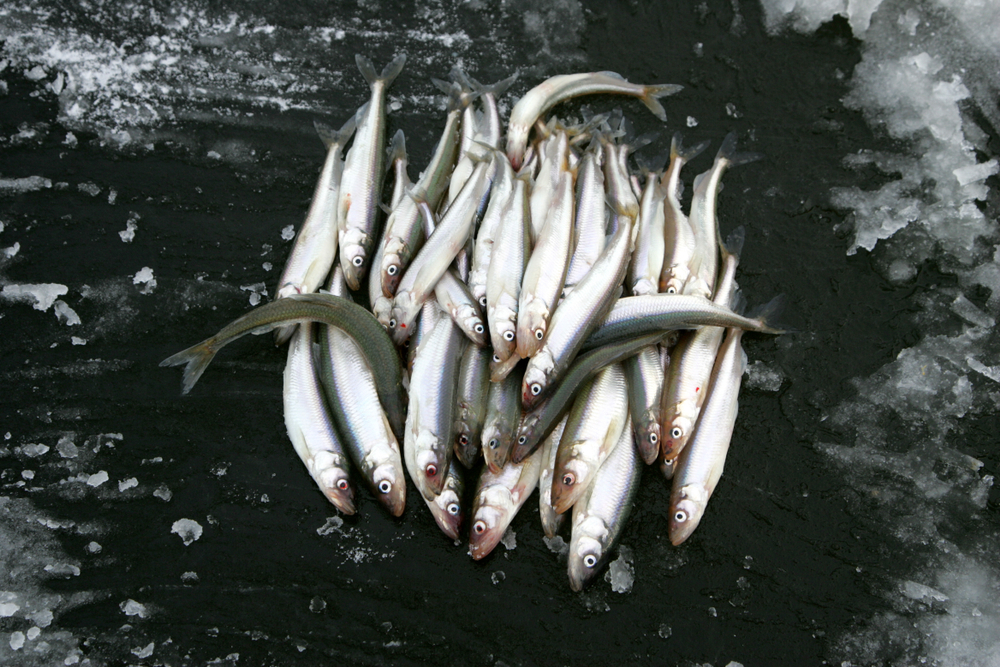Wageningen researchers spent five years studying the role of the Wadden Sea in the lifecycles of fish in the hope of learning more about the ecology and finding pointers for nature management and policy. ‘There are only a few levers you can pull when it comes to fish.’
‘Wadden Sea cops’ was the title of a 2020 Resource article on the start of the Swimway research project, which needed a lot of detective work. Scientists knew far less about fish in the Wadden Sea than about birds in the area and animals on the seabed. Larger species such as the sea trout, seabass, thicklip grey mullet and school shark had largely been below the radar during the regular fish monitoring exercises. The same applied to smaller fish that form shoals, such as herring and sprat, an important source of food for terns and other protected species. More was known about some fish species such as sole and plaice because they are important for the commercial fishing industry. But that information showed they were not doing well in the Wadden Sea, which they use as a nursery to grow to maturity. ‘If we know why that is, we might be able to turn things around,’ said Ingrid Tulp at the time. Tulp is a researcher at Wageningen Marine Research (WMR) and the scientific coordinator of Swimway. Five years on, she sums up the results for Resource.
Challenging area
The key question for Swimway was to determine how fish use the Wadden Sea. ‘Some fish spend their entire lifecycles in the Wadden Sea, others only part of the lifecycle. The underlying idea was that if you want to know how well a species is doing in the Wadden Sea, you need to know what function the Wadden Sea has for that species. We call that the lifecycle approach,’ explains Tulp.
But the Wadden Sea is a challenging area for fish research. The water is shallow, cloudy and strongly influenced by the tide, which makes the context very changeable. As a result, standard fish research methods can’t always be used. Indeed, an important subsidiary objective of the project was to look at possible new techniques to see what results they get and whether they could be used for additional fish monitoring.
The researchers learned a lot through Swimway about acoustic methods, says Tulp. ‘On the one hand, that deals with the problem you have in the Wadden Sea of not being able to see much underwater and on the other hand the catch methods have their limitations too. In a lot of fish studies, you have to take the fish out of the water, which isn’t good for any species of fish. That was why we were looking for less invasive methods where you can let the fish swim undisturbed.’
Sound
Various methods using sound waves turned out to be a real find. For example, reflections from the signals sent by a depth sounder could be used to detect shoals of small pelagic fish. Equipment on the bed of the Marsdiep — the choppy body of water between Texel and Den Helder — revealed swimming patterns that showed the Wadden Sea is a place where young herring and sprat grow to maturity. The researchers also used hydrophones to capture sounds the fish themselves produce. This gave a better picture of the fish communities in the various habitats. An advantage of the larger fish species is that you can fit transmitters to them. To study these species, the Swimway researchers installed a network of underwater acoustic receivers in the western Wadden Sea. ‘That tells you which receiver a fish swam past and therefore how that fish is using the Wadden Sea,’ explains Tulp. ‘The measurements showed that seabass stick to certain places: in the winter, they migrate to the English Channel, but when they return to the Wadden Sea the following year, they go to exactly the same places. Such insights are useful input for fish management. Governments could decide to no longer allow human activity or commercial fishing in those parts of the Wadden Sea, for example.’
Freshwater gradient
Swimway was also about climate change. ‘The Wadden Sea is very shallow and the water temperature is a crucial factor for cold-blooded creatures like fish,’ explains the coordinator. ‘Does that mean the Wadden Sea will no longer be suitable for certain species? And can we expect newcomers?’ WMR conducted lab experiments to look at temperature preferences. The Netherlands Institute for Sea Research (NIOZ) added theoretical models that let scientists make predictions about the future.
Climate change is also affecting the discharge of freshwater. That has irreversible consequences for a brackish body of water like the Wadden Sea with few natural transitions from freshwater to saline water. Tulp: ‘In the Swimway project, we were able to find a relationship between the length of the freshwater peak from the discharge sluices in the Afsluitdijk — how far the peak extends into the Wadden Sea — and the numbers of smelt and stickleback that try to reach the freshwater at the Afsluitdijk. We would like to investigate the freshwater gradient in greater detail in follow-up research.’
With the Wadden Association as the lead project partner, the idea was that the project would deliver knowledge that could be used for policy and nature management. ‘There are only a few levers you can pull when it comes to fish,’ says Tulp. ‘Now that the PhD candidates have finished (see inset), the supervisory team is working on the implications of the new insights for aspects such as the spatial setup, freshwater management and use of the Wadden Sea by humans.’ In addition to those recommendations, the Swimway project will also produce advice on monitoring. ‘We have already concluded that the current monitoring system is not sufficient given all the policy objectives.’
Five PhD projects
The Swimway PhD candidates Bas Dye, Margot Maathuis and Hannah Charan-Dixon have already obtained their doctorates for research on fish temperature preferences, the diet of herring and sprat, and the role of marshes for immature fish, respectively. Jena Edwards is due to get her PhD on 10 July for research on the function of the Wadden Sea for large fish. Maryann Watson, who studied the role of shellfish banks for fish, will get her doctorate after the summer. In Swimway, WMR collaborated with the University of Groningen, the Netherlands Institute for Sea Research (NIOZ), the Directorate-General for Public Works and Water Management, and Sportvisserij Nederland.

 Tulp describes fieldwork in the marshes as ‘often like a real mud bath’. Thanks to the efforts of Hannah Charan-Dixon and her team, more is now known about the importance of the edges of the mud flats for young fish. Photo Swimway Wadden Sea project organization
Tulp describes fieldwork in the marshes as ‘often like a real mud bath’. Thanks to the efforts of Hannah Charan-Dixon and her team, more is now known about the importance of the edges of the mud flats for young fish. Photo Swimway Wadden Sea project organization 

